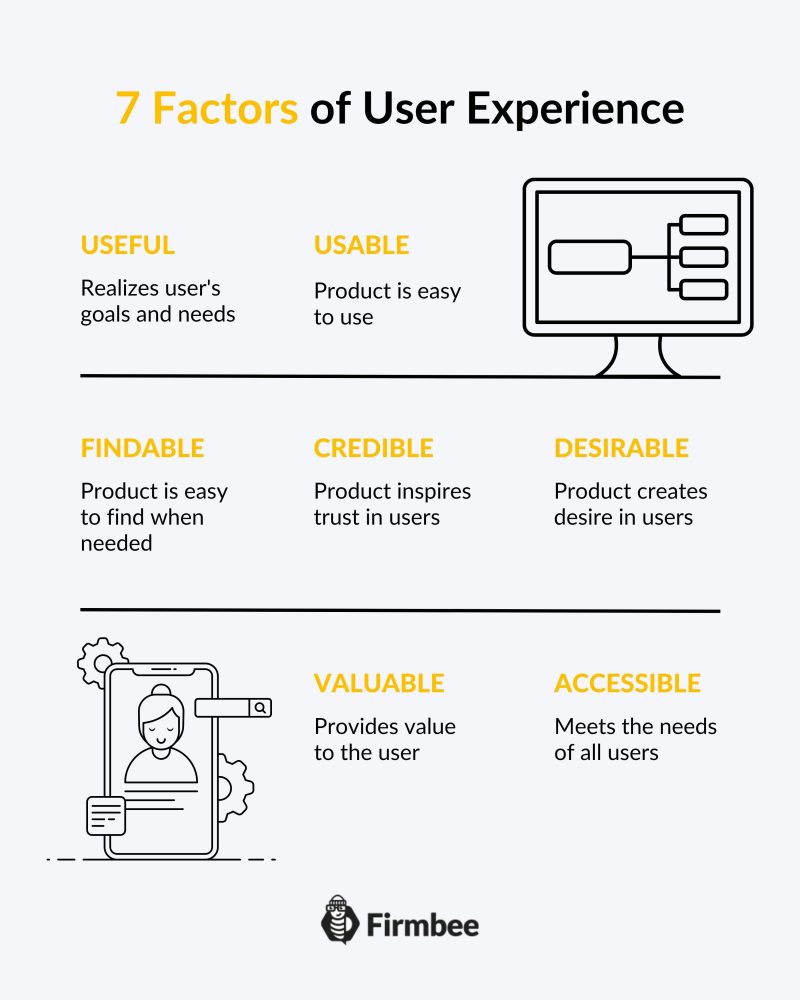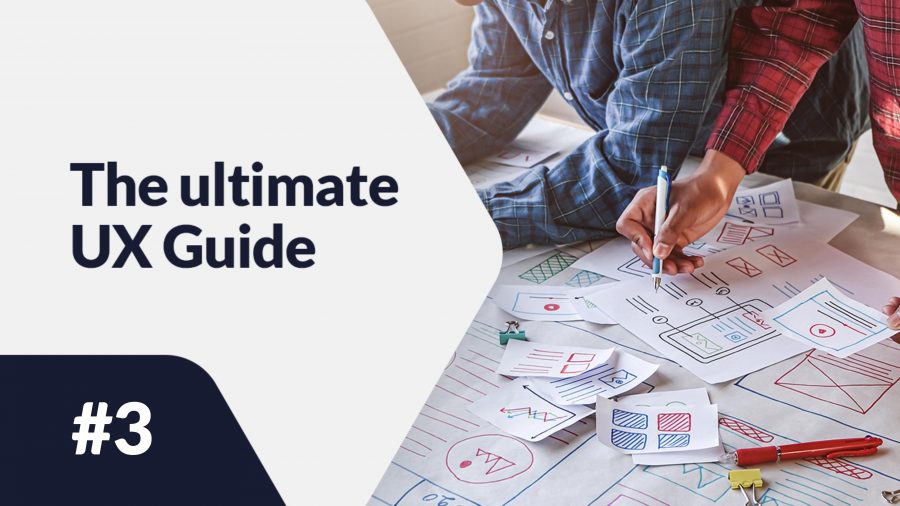User Experience Designing is a field dedicated to designing things in a superior way. The most important thing is – of course – the User Experience. So the feelings, impressions, and sensations that users get while using the designed product. Today we will show you 7 factors that influence User Experience.
7 factors of (outstanding) User Experience – table of contents:
7 factors of User Experience
“Everything is designed. Few things are designed well.”
These words, attributed to Brian Reed say it all. Designing is not enough – everything had to be designed. The true challenge is to create things well!
Of course, the every designer wants to make the User Experience as smooth and pleasant as it can be. Great UX translates directly into readiness to buy. How do you design a GOOD User Experience?
Stunning design that no one knows how to use? It is not great. An ugly interface, but it has all the needed features? Still not ideal. Beautiful and full of features products that user is not able to use? Please stop! Can you see the pattern here?
First-class user experience is holistic. The user gets impressed by a few factors at the same time. If one aspect is truly outstanding, but others are a pain – the overall rating will be mediocre.
Let us show you a list of seven features that every user experience designer should care about in their designs. Meeting all seven requirements is a road to success.
Behind the idea of these 7 factors is Peter Morville. He is an experienced designer and an Information Architect. After his broad research, he came up with a concept that illustrates all the necessary aspects of user experience that designers must consider.
- Useful
- Usable
- Findable
- Credible
- Desirable
- Accessible
- Valuable
Why would someone want to put a product on the market if it isn’t useful in the first place?
But sometimes, the usefulness isn’t as easy to spot as it may seem. For example – is the decor useful? Is entertainment useful? To make things easier, we should say that unuseful is unnecessary. If the product would work perfectly fine without one feature – that feature is unnecessary and therefore unuseful. If something adds value and serves a purpose – it is useful.
It may be confused with usefulness (which we just covered), but you will see in a second why it is a different aspect of the same problem.
Designing a mobile game in which you have to use more than two hands is not usable – because the user cannot use this game at all. The rule is straightforward – people must be able to use a feature. The easier it is to use the product – the better the design.
It is as manageable as it sounds – the design must be easy to find. If the customers can’t find a product, they would not also use it or buy it. Your goal is to present the crucial information to the right users at a convenient moment. Don’t let the users wander around with no idea what to do next.
In the world of User Experience, there are no second chances. If you fool the user once, they are not going back to your web-site ever again.
The user has to be able to trust the product. What does it mean? That the product does the things, that you said it does – and that it will last for a reasonable amount of time. If the users think that the product creator lied to them or had bad intentions – that is an example of a bad user experience.
In this characteristic, we are touching users’ emotions much more than in any aspect before. The desire depends on a few things, such as branding, image, identity, aesthetics, and emotional design.
The desirable factor assures you that the users not only will use the product – but that they will prefer your product over the products from your competitors.
The characteristic of accessibility often gets overlooked, and it is not a good thing.
Accessibility is all about providing an experience, not for the chosen ones but for a wide range of users. It’s all about knowing and meeting the needs of users.
What should you take into consideration? For example, don’t forget about impairments! Hearing loss, impaired vision, or motion is not as marginal as one may think. Also, designing with impaired people in mind helps design things that are easier to use for everyone.
You hope that your product delivers value. The bottom line is decent quality. But what does it even mean?
You may check the delivered value of your design by evaluating the costs of problems your design solves. What is the perfect value mix? Inexpensive design that solves an expensive problem.

What should you do with all this?
So, you want to be an excellent UX designer? The 7 factors we talked about play a crucial role in the overall quality of your design.
The hard part is you have to think of all 7 factors. The good thing is – that it pays off.
If you manage to design something useful, usable, findable, credible, desirable, accessible, and valuable… You did all the things right and you have the top-notch product in front of your eyes. Congratulations!
Summary
The success of a product depends on more than how beautiful the product looks. It is also more than how usable is the products.
User experience designers have to take into consideration many factors at once, to be sure, that the users’ wants and needs are being addressed. What is the point of all of this? Excellent user experience, of course.
Do you know that with Firmbee you can collaborate with your project team? Check out our project management software!
If you like our content, join our busy bees community on Facebook, Twitter, LinkedIn, Instagram, YouTube, Pinterest.
Author: Klaudia Kowalczyk
A graphic & UX Designer which conveys into design what cannot be conveyed in words. For him, every used color, line or font has a meaning. Passionate in graphic and web design.
The ultimate UX Guide:
- What is UX – and what it is NOT
- UX and UI – are they comparable?
- 7 factors of (outstanding) User Experience
- Do you know what UX Design means?
- Are you designing user experiences? Take care of these things!
- 10 usability heuristics for UX design you need to know
- The UX design process in 5 easy and simple steps
- User-centered design and its main principles
- Stages of User-Centered Design process
- What is Customer Experience?
- User Experience vs Customer Experience. A simple explanation of their relationship
- What is a Brand Experience?
- What is Human-Computer Interaction (HCI)?
- Why UX is important?
- Usability vs functionality in UX
- Examples of good UX design


















